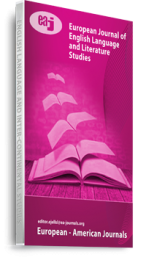Although an obsessive meditation on a multiracial society, John Updike’s Brazil is a magic-saturated reworking of the most romantic love story of them all, the Celtic legend of Tristan and Iseult. Apparently, Updike uses the medievalist legend as a vehicle to explore some typical Updikean themes: the social politics of love, class conflict, the question of gender and patriarchy, immorality and violence, etc. This paper is an attempt to point out how Updike digs into myth and uses the techniques of ‘magical realism’ to weave a narrative of his two young Brazilian lovers, Isabel and Tristão, who try to stay together despite various forces that conspire to keep them apart, notably opposition from their families. Updike’s utilization of ‘magical realism’ will be analyzed in light of the five primary characteristics of this mood as suggested by Wendy B. Faris in her seminal work Ordinary Enchantments: Magical Realism and the Remystification of the Narrative. This paper is also meant to highlight how Updike’s use of this device gives him an opportunity to hypothesize about the social and emotional consequences of a reversal of races. It is here that the link Updike creates between the indigenous peoples and the characters becomes key, for it allows the central characters, Isabel and Tristão, to experience the magic, and thus finally delve into what race means in their lives and for their identities. This paper argues how the characters manage, through magic too, to explore ethnic identity; an identity they previously ignored or abandoned. For all, this abandonment has negative consequences, leading to their devaluation of self. Isabel thinks that her being black and Tristão being white will solve much of their problems, but in reality it only makes them worse and Tristão ends up killed in the end.
Keywords: Amazonia, Brazil, Mythology, Updike, magical realism, race

